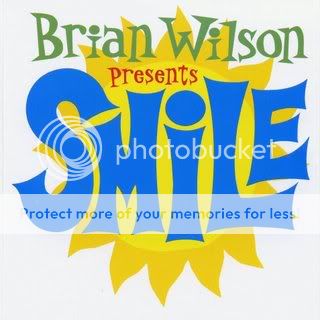I've always had a soft spot for Santa Claus. Heck, I know, we all do but for me it goes further than that. I was named after him, or more specifically, St Nicholas, and now, almost 46 years later, I'm fat and jolly.
Santa Claus, like Christmas itself, is a combination of history, Christian mythology and Pagan mythology. Generally speaking, stories, factual and legendary, of Nicholas, Bishop of Myra in the 4th century became mixed with Norse mythology, largely stories of Odin, and other traditions and stories, to create this jolly fat fellow in red and white with a big beard, who whips around the world in one night to bring all good children presents on Christmas Eve. He has been celebrated in song and stories,movies and books, and portrayed as elf, human, jolly, stern, and psychotic robot. The only thing missing is a gritty re-boot, although that can only be a matter of time. Odin's missing eye could come in handy.
 There have been attempts to give Santa a backstory, one that explains the elves, the workshop, the red and white look, the reindeer, the gift giving, the stockings, and above all the magic. The first attempt that I knew of was one of Rankin and Bass' stop motion animation classics, Santa Claus is coming to town. There the story is told by Fred Astaire and Santa was voiced by Mickey Rooney.
There have been attempts to give Santa a backstory, one that explains the elves, the workshop, the red and white look, the reindeer, the gift giving, the stockings, and above all the magic. The first attempt that I knew of was one of Rankin and Bass' stop motion animation classics, Santa Claus is coming to town. There the story is told by Fred Astaire and Santa was voiced by Mickey Rooney.  It was some years later I discovered they had gone to the well a second time with The Life and Adventures of Santa Claus, a much darker and more mythical approach. Indeed, some fifteen years separate the two films. There the Great Ak, Master Woodsman, with many other forest spirits and creatures, debate whether the man called Claus had done enough to earn the Mantle of Immortality. A baby abandoned in a magic forest becomes Claus, a skilled toymaker. Again he conceives the idea of spreading happiness with toys, helped by his adoptive faery and elven family. But this quest is actively opposed by certain forest spirits who will kill him if they can. This one was not considered as successful, although I found it striking on first viewing. When the credits told me it was based on the novel by L Frank Baum, he of the Oz books, I was determined to find it.
It was some years later I discovered they had gone to the well a second time with The Life and Adventures of Santa Claus, a much darker and more mythical approach. Indeed, some fifteen years separate the two films. There the Great Ak, Master Woodsman, with many other forest spirits and creatures, debate whether the man called Claus had done enough to earn the Mantle of Immortality. A baby abandoned in a magic forest becomes Claus, a skilled toymaker. Again he conceives the idea of spreading happiness with toys, helped by his adoptive faery and elven family. But this quest is actively opposed by certain forest spirits who will kill him if they can. This one was not considered as successful, although I found it striking on first viewing. When the credits told me it was based on the novel by L Frank Baum, he of the Oz books, I was determined to find it. This was pre-internet days (yes children, there were such times) and obscure books were difficult to find. Many years later I did find a copy in a second-hand bookstore. Sadly, I found it more in the vein of Baum's lesser Oz books, episodic, lacking a strong drive, and Claus is not the main mover in removing the threats to him or achieving his dreams, and so becomes a passive character. I have not seen the TV special for a long time, but I remember it as better. Perhaps I am wrong. I should get hold of it too. There is a more recent 2D animation, but it is not very good, although it did hold the attention of my seven-year-old niece nicely.
This was pre-internet days (yes children, there were such times) and obscure books were difficult to find. Many years later I did find a copy in a second-hand bookstore. Sadly, I found it more in the vein of Baum's lesser Oz books, episodic, lacking a strong drive, and Claus is not the main mover in removing the threats to him or achieving his dreams, and so becomes a passive character. I have not seen the TV special for a long time, but I remember it as better. Perhaps I am wrong. I should get hold of it too. There is a more recent 2D animation, but it is not very good, although it did hold the attention of my seven-year-old niece nicely. More recently, Jeff Guinn attempted to bring the stories of Nicholas of Myra together with fables of Santa to write theThe Autobiography of Santa Claus. It's an admirable attempt to marry history and myth into a coherent whole but for me it was bit earnest and a teeny bit dull - it lacked magic.
More recently, Jeff Guinn attempted to bring the stories of Nicholas of Myra together with fables of Santa to write theThe Autobiography of Santa Claus. It's an admirable attempt to marry history and myth into a coherent whole but for me it was bit earnest and a teeny bit dull - it lacked magic.
This year has seen a wonderful addition to the ranks, A boy called Christmas, by Matt Haig. While it hits many of the same points, elves, reindeer, presents, stockings etc it does so in a charming, off-beat and irreverent way, and the story as a whole has unexpected, fresh rhythm.
 You may wonder how I know the true story of Father Christmas and I will tell you you shouldn't question such things. Not right at the start of a book. It's rude, for one thing. All you need to understand is that I do know the story of Father Christmas, or why else would I be writing it?
You may wonder how I know the true story of Father Christmas and I will tell you you shouldn't question such things. Not right at the start of a book. It's rude, for one thing. All you need to understand is that I do know the story of Father Christmas, or why else would I be writing it?
Nikolas, born on Christmas day, is the son of a woodcutter in Finland, whose only two Christmas presents ever have been a sleigh and a doll made out of a turnip. When his father joins an ambitious group looking for proof of elves up in Lapland, Nikolas is left in the care of his deeply unpleasant aunt Carlotta, and, as you might say, adventure ensues.
This is not a twee, nor even a safe story. Nikolas and the other characters he meets on the way are in genuine danger, and death and exploding heads can ensue. But through it all is the thread of belief in magic, and believing though you've never seen it, like a mouse can believe in cheese, even if he's never seen cheese. The illustrations by Chris Mould are fun and charming, and occasionally help to push the story along, or at least explicate a point otherwise glossed over. There's even some reindeer poo and wee jokes, if you like that sort of thing - and who doesn't? And in the end, it all boils down to the joy of giving.
I think this would make a lovely gift, and would be excellent book to be read aloud. I think you should get in quick before it becomes a classic book everyone knows. And available in bookstores right now!







